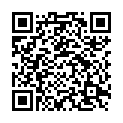|
|
|
| Module code: E2105 |
|
|
2V+1U+1P (4 hours per week) |
|
5 |
| Semester: 1 |
| Mandatory course: yes |
Language of instruction:
German |
Assessment:
Written exam, practical examination with report (not graded)
[updated 08.01.2020]
|
E2105 (P211-0075, P211-0076) Electrical Engineering and Information Technology, Bachelor, ASPO 01.10.2018
, semester 1, mandatory course, technical
|
60 class hours (= 45 clock hours) over a 15-week period.
The total student study time is 150 hours (equivalent to 5 ECTS credits).
There are therefore 105 hours available for class preparation and follow-up work and exam preparation.
|
Recommended prerequisites (modules):
None.
|
Recommended as prerequisite for:
E2610 Integration-Compatible Circuitry
[updated 07.02.2021]
|
Module coordinator:
Prof. Dr. Albrecht Kunz |
Lecturer: Prof. Dr. Albrecht Kunz
[updated 10.09.2018]
|
Learning outcomes:
After successfully completing this module, students will be able to design and implement digital systems (switching networks and switchgear) independently. They will have mastered methods from two-element Boolean algebra for describing and simplifying switching functions. Students will be able to perform calculations in the binary numeral system in elementary arithmetics and convert numbers from one number system to another (binary, octal, hexadecimal). They will be able to use graphical methods (Karnaugh map) and computational methods (Quine-McCluskey algorithm) to simplify circuits and clearly draw the resulting circuits. Students will be familiar with the properties and applications of different codes (e.g. BCD, Aiken, Gray, ASCII). They will understand the structure and function of flip-flops for realizing digital electronic components (e.g. counters, code converters, shift registers). Students will be familiar with digital arithmetic circuits, data selectors, multiplexer and demultiplexer circuits. These are important for understanding CPU architectures in subsequent lectures (e.g. microcontrollers, embedded systems). They will be familiar with the basics of automata theory and be able to design simple automata. In the practical part of the course, students will independently build digital circuits in small groups or simulate digital circuits and verify their functionality. By conducting experiments together, they will learn cooperative behavior.
[updated 08.01.2020]
|
Module content:
1. Introduction and the fundamentals of digital electronics 2. Mathematical basics: Boolean function, Boolean algebra, number systems (decimal, binary, octal, hexadecimal) addition, subtraction, multiplication, division of binary numbers 3. Coding methods: purpose of coding, representation of different codes 4. Representation, synthesis and analysis of Boolean functions: disjunctive and conjunctive normal form, graphical circuit synthesis (Karnaugh map), minimization method according to Quine-McCluskey 5. Optimization of switching networks: logic gates in digital electronics, linking several gates, substitution by NOR / NAND gates 6. Circuit design based on the 2 out of 3 circuit 7. Flip-flops: structure and operation of flip-flops, pulse-triggered and edge-triggered flip-flops, characteristic equation 8. Registers and memory circuits: designing asynchronous and synchronous counters 9. Arithmetic circuitry: half adder, full adder, carry-lookahead adder, subtractors, multipliers 10. Digital selection and connection circuitry: multiplexer, demultiplexer, comparators, A/D and D/A converters 11. Automata theory: Moore and Mealy machines, state diagram, state transition table, program flowchart
[updated 08.01.2020]
|
Teaching methods/Media:
Lecture notes, presentation with beamer during the lecture and tutorial, use of lab equipment (signal generator, oscilloscope, digital multifunction measuring instruments, single board computer) during lab class
[updated 08.01.2020]
|
Recommended or required reading:
Becker, Jürgen; Lipp, Hans-Martin: Grundlagen der Digitaltechnik, De Gruyter Oldenbourg, 2010, 7. Aufl., ISBN 978-3486597479 Beuth, Klaus: Digitaltechnik (XXXX), Vogel, (latest edition) Fricke, Klaus: Digitaltechnik - Lehr- und Übungsbuch für Elektrotechniker und Informatiker, Vieweg + Teubner Meuth, Hermann: Digitaltechnik: Eine anschauliche und moderne Einführung, VDE, 2017, ISBN 978-3800736379 Tietze, Ulrich; Schenk, Christoph: Halbleiterschaltungstechnik, Springer, (latest edition) Woitowitz, Roland; Urbanski, Klaus; Gehrke, Winfried: Digitaltechnik: Ein Lehr- und Übungsbuch, Springer, (latest edition)
[updated 08.01.2020]
|


